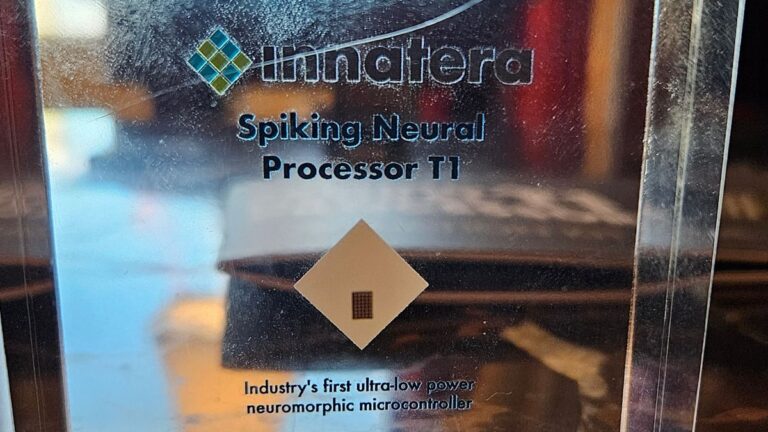LAS VEGAS — The world’s first “neuromorphic chip” is expected to be in stores by next year — and it will extend the battery life of smart devices. The chip mimics the architecture of the human brain and is intended to enable artificial intelligence (AI) capabilities on power-constrained smart devices.
“Smart” devices such as Wi-Fi-connected light bulbs, doorbells, and smoke alarms have built-in sensors that detect and send data to the cloud for processing.
But this process is power-intensive, Sumeet Kumar, CEO of processor company Innatera Nanosystems, told Live Science in an interview at CES 2025. The AI processing these devices perform also requires an internet connection.
However, the Spiking Neural Processor T1 should significantly reduce the power consumption of future smart devices.
It works by analyzing sensor data in real-time to identify patterns and potentially clean up the data from the sensors. No internet connection required.
imitate the brain
This device is a neuromorphic processor. This means that its architecture is arranged to mimic the brain’s pattern recognition mechanisms. For example, when we sense something, whether it’s a smell or a sound, different sets of neurons fire to identify it.
Similarly, inside the chip, different groups of artificial neurons record spikes. The underlying principle is a spiking neural network (SNN). A neural network is a collection of machine learning algorithms, and the spikes it produces are similar to signals produced by brain cells.
Related: Intel unveils “neuromorphic computer,” the largest AI in history that mimics the human brain
SNN algorithms also tend to have file sizes about 100 times smaller than traditional deep neural networks used in large language models.

layers of computation
The T1 chip has three basic layers. The first is an SNN-based computing engine that consumes less than 1 milliwatt of power and typically records less than 1 millisecond of latency or delay for most applications, Kumar said. The second layer contains a traditional deep neural network, and the third layer contains a standard processor that handles the functionality of the system.
T1 or a similar chip can extend battery life by up to six times in some smart devices and scenarios, Kumar said. For example, a smart doorbell prototype with a T1 processor that can detect the presence of a person using radar technology lasts for one to two hours, compared to traditional Wi-Fi-based products that transmit images and video. Lasted 18-20 hours. Send the data to the server.
Applications include smart lighting, all kinds of detectors for people counting, door opening and closing systems, and even earphones. The T1 chip could theoretically separate different sounds for noise cancellation. When used in sound-based applications, the company claims it reduces energy consumption by 80-100 times and latency by 70 times.
The chip is being prepared for mass production this year, with samples expected to be shipped to device manufacturers. Kumar expects the first products with the T1 neuromorphic chip to be on store shelves by 2026.


